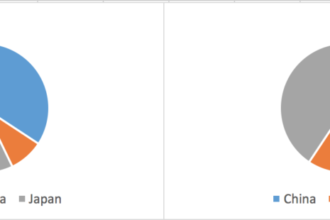[Vascular closure devices are among the products and technologies addressed in the MedMarket Diligence report, “Worldwide Surgical Sealants, Glues, and Wound Closure Markets, 2013-2018” (details), published October 2014.]
[Vascular closure devices are among the products and technologies addressed in the MedMarket Diligence report, “Worldwide Surgical Sealants, Glues, and Wound Closure Markets, 2013-2018” (details), published October 2014.]
From relatively humble beginnings in the late 1990s, and some failed product designs involving in-dwelling collagen plug materials that were eventually abandoned due to the potential risk of embolization, the vascular closure market – primarily serving the fields of interventional radiology and interventional cardiology – has mushroomed over the past several years with the introduction of a number of new, safer, and more effective products. Effectively sealing the puncture left behind after a catheter-based procedure performed through the femoral artery helps achieve faster hemostasis, enabling the patient to walk and resume activities sooner than with manual compression and thus it provides much greater post-procedure comfort for the patient.
Growth in this market is also being driven by a desire to increase efficiency and throughput in the cath lab and by the growing number of complex, large-bore procedures (18-French and greater) being performed percutaneously through the femoral artery (e.g., endovascular abdominal aortic aneurysm repair and transvascular aortic heart valve replacement), which, due to the large size of the puncture, routinely employ a closure device to achieve hemostasis following the procedure.
However, usage of vascular closure devices varies widely by location and facility and they are still not considered routine for simple cardiac catheterizations, such as cardiac stenting procedures, in large part due to the added cost they convey to the procedure – a cost that in the US, often must be absorbed by the hospital. In fact, in about 40% of interventional coronary and peripheral vascular procedures, physicians still employ manual compression alone. Additional clinical data proving their benefits versus standard manual compression in a variety of clinical settings, but particularly for high-complexity procedures or high-risk patients, will be essential to improving payor coverage and reimbursement and increasing penetration of these devices.
The active vascular closure device (VCD) market will be negatively impacted going forward by the rapid rise in the number of interventional procedures (particularly simple cardiac interventions) performed via the radial artery in the wrist, which leaves behind a much smaller arteriotomy that is easier to close using manual compression alone or with an assisted-compression device. The percentage of procedures performed via the radial artery route varies widely by country/region as well as by physician/facility preference; however, this newer method of performing interventional procedures, which offers a lower vascular complication rate, is trending upward overall. To address this growing opportunity, several manufacturers have developed compression-assist devices designed specifically to facilitate hemostasis after radial procedures.
When the VCD market began some twenty years ago, there were just two active closure device products available: Abbott Vascular’s Perclose and St. Jude Medical’s AngioSeal. Now, however, there are more than a dozen different products available or in development in the active, mechanical closure space alone (not including passive devices such as hemostats and compression devices), and the list of competitors continues to grow.
Selected Small- and Large-Bore Vascular Closure Devices
| Company | Device | Comments/Status |
|---|---|---|
| Abbott Vascular/Abbott Laboratories | Perclose ProGlide | Suture-mediated closure device for 5-21F femoral artery access sites. |
| ProStar XL | Suture-mediated closure device for 8.5-10F sheaths (8.5-24 F OUS). | |
| StarClose SE | Closure device delivers nitinol clips for 5-6F access sites. | |
| Perclose A-T | Suture-mediated closure device for 5-8F femoral artery access sites. Sold in US only. | |
| AccessClosure Inc. (acquired by Cardinal Health in May 2014 for $320M cash.) | MynxGrip | Mynx sealant with Grip Technology added to distal end to seal the arteriotomy while expanding to fill tissue tract. |
| Mynx Ace | Extravascular PEG sealant that actively adheres to the artery for secure mechanical closure. Dissolves within 30 days. | |
| Arstasis | Axera 2 Access Device | This device creates a long, shallow-angle arteriotomy (5-6F) through the femoral artery wall. Resulting arteriotomy has self-sealing capability that requires only minimal compression for rapid hemostasis and eliminates the need to leave behind foreign material to close the puncture site. |
| Cardiva Medical | Vascade Vascular Closure System | Utilizes existing procedural sheath to obtain temporary hemostasis using a collapsible disc while delivering a thrombogenic, resorbable collagen patch extravascular to the arteriotomy. For closure of 5-7F femoral arteriotomies. |
| Cardiva Catalyst II and III manual assisted closure devices | Manual closure assist device with a deployable nitinol disc that provides temporary hemostasis at the puncture site while puncture recoils to size of an 18-gauge needle. Wire has hemostatic coating to accelerate clotting. Catalyst III adds protamine sulfate coating for patients receiving heparin. | |
| Cordis/J&J | Exoseal Vascular Closure Device | Uses existing procedural sheath to deliver resorbable PGA plug to the outside of the artery wall at the site of the arteriotomy. For closure of 5-7F femoral arteriotomies. FDA approved May 2011. |
| Innovasa Corp. | Stat*Seal Available in over the wire (for deeper insertion in the puncture tract) and topical versions | Button-like device with attached medicated foam-tip bandage. Tip is inserted into the femoral puncture tract and remainder of device rests on skin around puncture site. Facilitates hemostasis via targeted focal pressure combined with the hydrophilic drying and pro-coagulant effect of the foam tip, which is medicated with chitosan. After hemostasis is achieved, the device is completely removed from the patient. FDA cleared. |
| InSeal Medical Ltd. (Israel; a fully owned subsidiary of E-Pacing Inc.) | InSeal Intravascular Closure Device | Self-expanding nitinol frame covered with biodegradable membrane for closure of 14-21F punctures in vessels 6-10mm diameter. Device is delivered using procedure sheath (no sheath exchange required); membrane covers puncture and uses blood pressure to seal against vessel wall. Delivery and deployment take less than 2 minutes. In clinical development for use following large-bore procedures such as TAVR (transcatheter aortic valve replacement) and EVAR (endovascular aortic aneurysm repair). |
| Morris Innovative Inc. | CombiClose/ControlClose Vascular Closure Devices (formerly FISH) | Devices deliver a plug of ExtraCellular Matrix, made of porcine small intestine submucosa (SIS), to the inside of the vessel wall, which seals the arteriotomy and promotes remodeling of the host tissue within 30 days. For 5-8F punctures. |
| St. Jude Medical | AngioSeal | Intra-arterial anchor, suture, and collagen components form ÒsandwichÓ to close arteriotomy. FDA labeled for immediate restick and for 20-min ambulation/60-min discharge for diagnostic cases. Components resorb within 90 days. |
| AngioSeal Evolution | Next-generation AngioSeal with automated collagen compaction and enhanced ease of use. | |
| Transluminal Technologies LLC | Velox CD Vascular Closure Device | Consists of delivery device and metal closure implant made of a proprietary magnesium alloy. Intended for closure of femoral arteriotomies. Implant comprises an intraluminal footplate that absorbs in about 24 hours and an extraluminal plug that absorbs in two weeks. CE marked July 2014. |
| Vascular Closure Systems Inc. | FastSeal Bioabsorbable Vascular Access Closure System | System deploys a non-collagen, double-disc polymer sealing element that is positioned with components resting on both the inner and outer side of the artery, sandwiching the puncture site and enabling hemostasis within 60 seconds. FIH trial completed for 6-8F puncture closure system. OUS commercialization is expected to begin in 2014. A large-bore (18-F) system is also in early-stage development. |
Source: MedMarket Diligence, LLC: Report #S192.







